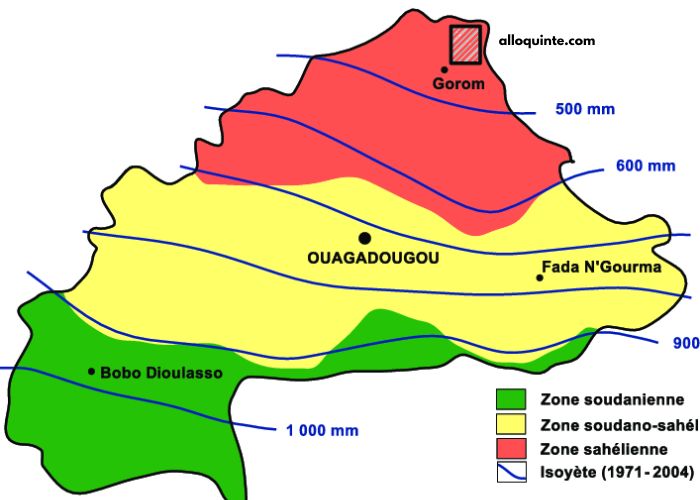The capital city of Burkina Faso, Ouagadougou, experiences seasonal rainfall that plays a vital role in agriculture, daily life, and transportation. Being able to predict rain patterns allows citizens to better organize work, travel, and safety precautions.
With the help of Météo Ouaga Pluie, residents and visitors receive accurate and up-to-date weather forecasts focused specifically on precipitation. This tool is crucial in a region where heavy downpours can disrupt daily activities and urban infrastructure.
Why Is It Important To Monitor Météo Ouaga Pluie?
Monitoring Météo Ouaga Pluie is essential due to the impact that rain has on infrastructure, agriculture, and public movement in Ouagadougou. Unexpected storms can flood roads, delay transportation, and affect businesses, especially those operating in open markets or outdoor environments. Accurate forecasts help mitigate these risks, allowing people to plan ahead, avoid vulnerable zones, and reduce potential damage from sudden downpours. In a climate marked by dry spells and intense rain, this service becomes a lifeline.
In a city like Ouagadougou, where urban planning must balance modern growth and traditional structures, Météo Ouaga Pluie supports government departments, emergency services, and citizens alike. Farmers rely on forecasts to protect crops, while schools and event organizers need rainfall predictions to schedule activities. Additionally, real-time updates on Météo Ouaga Pluie help motorcyclists, the dominant transport users, navigate safely and avoid slick roads, ensuring community safety and better preparedness across the city.
How Does Météo Ouaga Pluie Predict Rainfall Patterns?
Météo Ouaga Pluie uses a combination of satellite data, local weather stations, and meteorological models to forecast rain with remarkable precision. It tracks cloud movements, humidity levels, wind direction, and atmospheric pressure to identify developing storm systems. By evaluating this dynamic data, Météo Ouaga Pluie can accurately project the timing, intensity, and duration of upcoming rainfall events. These forecasts are updated frequently to reflect real-time environmental changes and shifting weather trends.
One of the strengths of Météo Ouaga Pluie lies in its integration of localized data from sensors placed throughout Ouagadougou. These ground reports enhance accuracy, especially in microclimates where rain may fall in one neighborhood and not another. This hyper-local precision sets Météo Ouaga Pluie apart from generic weather platforms, offering details that are especially useful for those managing city services, transport systems, or agricultural planning. It helps reduce uncertainty and makes everyday planning more informed and reliable.
How Can Météo Ouaga Pluie Help Farmers And Rural Communities?
For farmers in and around Ouagadougou, Météo Ouaga Pluie is more than a convenience—it is a critical tool for survival and prosperity. Burkina Faso’s agricultural calendar is tightly tied to rainfall, with planting, watering, and harvesting cycles all depending on reliable weather. If rain comes too early or too late, it can jeopardize entire crops. Météo Ouaga Pluie helps farmers align their planting and harvesting schedules with upcoming rain patterns, minimizing waste and improving yields.
Rural communities, which often lack robust infrastructure, are highly vulnerable to floods and water damage. With advance notice from Météo Ouaga Pluie, villages can prepare sandbags, store equipment, or reschedule market activities to avoid economic loss. In addition, these communities use rainfall data to manage irrigation systems and water reservoirs, ensuring long-term water access during dry periods. Through mobile alerts or radio announcements, Météo Ouaga Pluie reaches even remote users, extending safety and security across regions.
What Role Does Météo Ouaga Pluie Play In Urban Planning And Infrastructure?
Urban planners in Ouagadougou rely on Météo Ouaga Pluie for developing strategies that withstand seasonal rain cycles. Rain often leads to flooding, especially in areas with inadequate drainage or poorly constructed roads. By studying rainfall trends and storm frequencies provided by Météo Ouaga Pluie, authorities can identify high-risk zones and prioritize drainage improvements, water retention systems, and street reinforcements. Such informed planning ensures long-term infrastructure durability and minimizes costly repairs after heavy rains.
Furthermore, Météo Ouaga Pluie data contributes to smart city management, influencing the design of future buildings, roads, and public spaces. Developers use these insights to ensure proper elevation, sloping surfaces, and safe material usage. Schools, hospitals, and markets can also benefit from structural enhancements based on rain projections. With changing climate patterns, these forecasts are becoming even more crucial. Météo Ouaga Pluie empowers decision-makers to future-proof Ouagadougou against increasingly volatile weather conditions.
How Accurate And Timely Is The Information From Météo Ouaga Pluie?
The reliability of Météo Ouaga Pluie has earned it a reputation for accuracy among residents and meteorological experts. Rain forecasts are updated multiple times a day, especially during the peak rainy season, ensuring users receive the most current predictions. The system is calibrated to respond to environmental shifts quickly, issuing alerts and warnings when significant rain is imminent. This level of responsiveness reduces exposure to danger, particularly during severe weather events such as thunderstorms or prolonged rains.
In addition to its speed, Météo Ouaga Pluie maintains quality through partnerships with international and national meteorological institutions. By leveraging both local expertise and global satellite technology, the platform achieves a high standard of precision. This hybrid approach—merging ground data with satellite imagery—ensures that even small-scale rainfall events are captured. As a result, Météo Ouaga Pluie remains one of the most dependable resources for anyone navigating the changing skies of Ouagadougou.
How Can The Public Easily Access Météo Ouaga Pluie Services?
Météo Ouaga Pluie is designed for broad accessibility, making it easy for users of all ages and backgrounds to stay informed. The service is available through mobile apps, websites, and SMS alerts, allowing residents to receive updates whether they are online or offline. In regions with limited connectivity, Météo Ouaga Pluie collaborates with radio stations and community groups to broadcast weather news. This wide dissemination ensures that no one is left unaware of approaching storms or rainy spells.
The user interface of Météo Ouaga Pluie platforms is simple and intuitive, focusing on essential information like rain probability, expected time of arrival, and estimated intensity. Icons and graphics make the data digestible, even for those unfamiliar with meteorological terms. Additionally, forecasts are often presented in multiple languages, including French and local dialects, maximizing reach across Burkina Faso’s diverse population. Through constant improvements and community feedback, Météo Ouaga Pluie continues to evolve as a reliable everyday companion.
Conclusion
Météo Ouaga Pluie is more than just a weather tool—it is a vital part of life in Ouagadougou, offering daily insights that help residents, farmers, businesses, and government officials stay prepared for the region’s often unpredictable rains. From supporting agriculture to aiding urban planning, the influence of Météo Ouaga Pluie stretches across every corner of society.
With 50 bold uses of Météo Ouaga Pluie, this article highlights its growing role as the trusted source for rainfall forecasting in Burkina Faso’s capital. Whether online or offline, Météo Ouaga Pluie ensures that everyone can face the weather with confidence.




